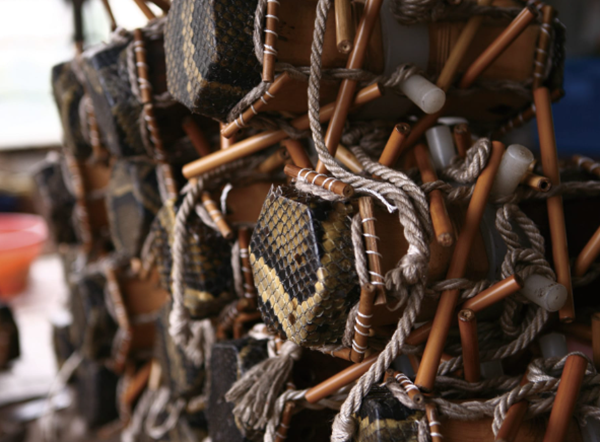The craft of erhu making
Updated: Jan 16, 2025Hailed as the hometown of erhu, Meicun subdistrict in Wuxi produces approximately 50,000 mid-to-high-end erhus annually, accounting for about a quarter of China's total market share.
The art of erhu craftsmanship has given rise to a variety of distinct styles, represented by schools such as Beijing, Shanghai, Suzhou, and Zhejiang. Erhu made in Wuxi typically follow the Suzhou school, characterized by the gentle and melodious qualities of the Jiangnan region.
1. Wood body making
Red sandalwood and rosewood are preferred for the traditional Chinese erhu. First, the upper part is planed square, and the corners of the lower part are planed off to form a conical shape that is thicker at the top and tapers towards the bottom. Next, the curved head is glued and filed to ensure a natural and smooth curvature, and then the holes are drilled.

A man makes the wood body of an erhu.
2. Tuning pegs and erhu holder making
The process begins by shaping the material into a cone, and then petal-like patterns are carefully carved into its surface. Finally, these intricate designs are meticulously smoothed and polished.
3. Resonator box making
The resonator box is composed of six wooden panels, each measuring 140 millimeters in length, 60 millimeters in width, and 11 millimeters in thickness. Initially, both sides of the panels are polished to a smooth finish, and then grooves are carved into the panels to create sound channels and the edges are cut at a slant (54 millimeters at the front and 47 millimeters at the rear). The panels are then glued together, with each side of the panels beveled at a 60-degree angle to ensure a perfect fit. Following this, decorative indentations are made on the exterior of the resonator box. Finally, the edges are rounded and the entire surface is sanded to achieve a smooth finish.

Resonator boxes.
4. Snakeskin processing
The process begins by selecting a piece of skin with appropriate thickness and soaking it in water for a suitable amount of time. Next, any excess flesh is carefully removed from the snake skin. Finally, while the skin is still damp, it is repeatedly kneaded and tapped using wooden tools to achieve the desired level of tightness, ensuring optimal acoustic performance.

Snakeskin is processed.
5. Assembly
Fit all the components together, making sure the neck and resonator box are seamlessly joined without any gaps.









